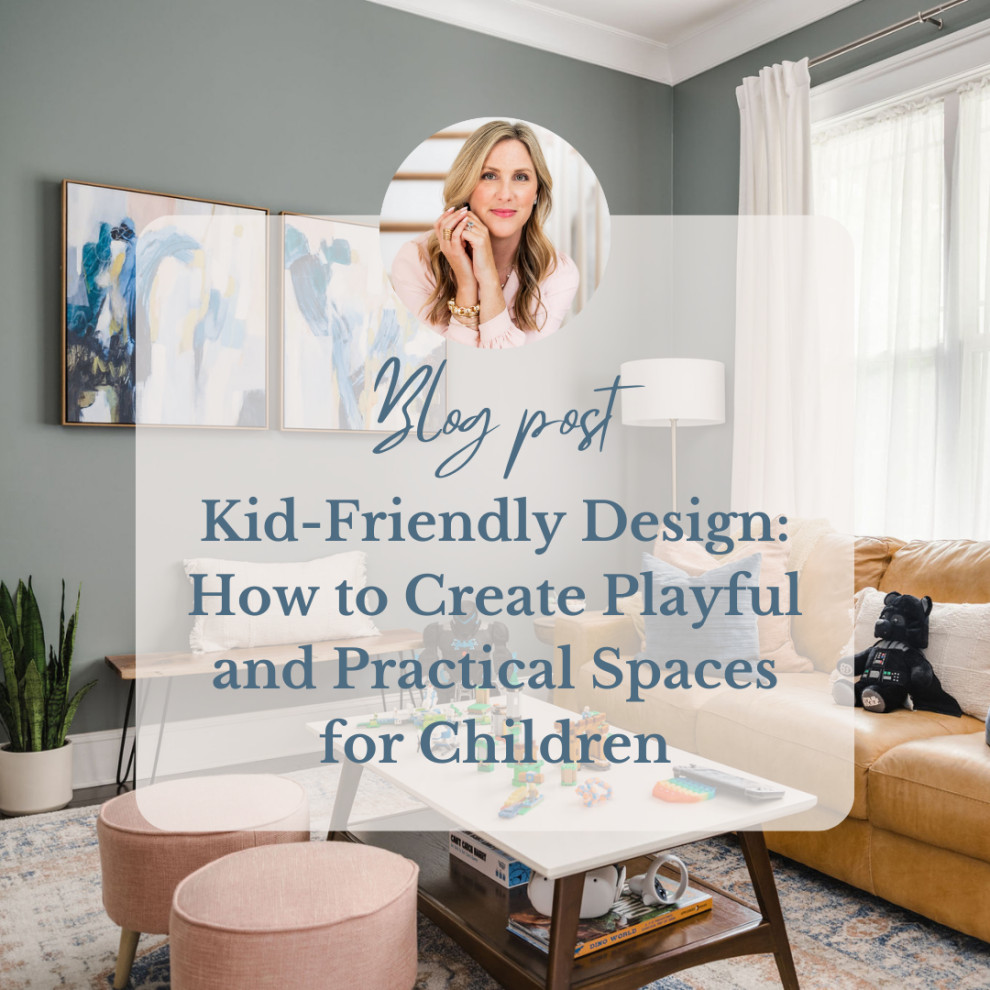Kid-Friendly Design: How to Create Playful and Practical Spaces for Children

Designing spaces for children involves a delicate balance between creating an environment that's both playful and practical. As an interior designer, it's important to consider the unique needs and preferences of children while ensuring the space remains functional, safe, and with longevity. Here's how you can craft spaces that kids will adore and parents will appreciate.
Prioritize Safety
When designing for children, safety is the foundation upon which all other elements are built.
- Rounded Edges: Opt for furniture with rounded corners to minimize the risk of injury.
- Sturdy Furniture: Select robust furniture that won't easily tip over, especially for younger children.
- Childproofing: Install safety latches on cabinets and drawers and ensure heavy items are stored on lower shelves.
Encourage Creativity and Learning
Spaces should be designed to stimulate creativity and support learning.
- Art Stations: Create designated areas for art and crafts with easy-to-clean surfaces and accessible storage for supplies.
- Reading Nooks: Incorporate cozy reading corners with comfortable seating and a variety of books.
- Interactive Walls: Consider adding chalkboard or whiteboard walls where kids can draw and express themselves.
Integrate Play Areas
Play is an essential part of a child's development. Design areas that invite play and imagination.
- Toy Storage: Use open shelves, bins, and baskets to keep toys organized and within easy reach.
- Themed Spaces: Design rooms around exciting themes (e.g., space, jungle, underwater) to spark imaginative play.
Use Vibrant Colors and Patterns
Children are drawn to bright colors and fun patterns, which can make a space feel more lively and inviting.
- Accent Walls: Paint one wall in a bold color or use themed wallpaper.
- Colorful Rugs: Select rugs with playful designs and vibrant hues to add warmth and comfort.
Make Spaces Adaptable
Children grow quickly, and their needs change. Designing adaptable spaces can save time and money in the long run.
- Modular Furniture: Choose furniture that can be easily reconfigured or repurposed as children grow.
- Adjustable Features: Consider adjustable shelving, desks, and seating to accommodate growth.
- Neutral Base: Use neutral colors for large furniture pieces, allowing for easy updates with accessories as tastes change.
Promote Organization
Teaching children to keep their space organized can foster responsibility and independence.
- Labelled Storage: Use labels or pictures on storage bins and shelves to help kids learn where things belong.
- Versatile Storage Solutions: Invest in storage solutions like cubbies, baskets, and drawer organizers that can grow with your child.
Create Multi-functional Spaces
Maximize the utility of your design by creating spaces that serve multiple purposes.
- Convertible Furniture: Use pieces that can transform, such as beds that turn into desks or storage benches that double as seating.
- Shared Spaces: Design areas that can transition from play zones to study or relaxation areas as needed.
- Outdoor Connection: If possible, design a seamless transition between indoor and outdoor play areas to encourage a variety of activities.
Personalize the Space
Adding personal touches can make a space feel special and unique to the child.
- Display Art: Frame and display your child’s artwork to give them a sense of pride and ownership.
- Personal Touches: Include decor that reflects your child’s interests, such as their favorite characters, hobbies, or sports.
- Involve Your Child: Let your child have a say in the design process by choosing colors, themes, or specific items, making the space truly their own.
Conclusion
Creating a kid-friendly space is a rewarding challenge that blends creativity with practicality. By prioritizing safety, encouraging creativity, incorporating play areas, using vibrant colors, designing adaptable spaces, promoting organization, creating multi-functional areas, and adding personal touches, you can craft an environment where children can thrive, learn, and play.
Happy designing!
